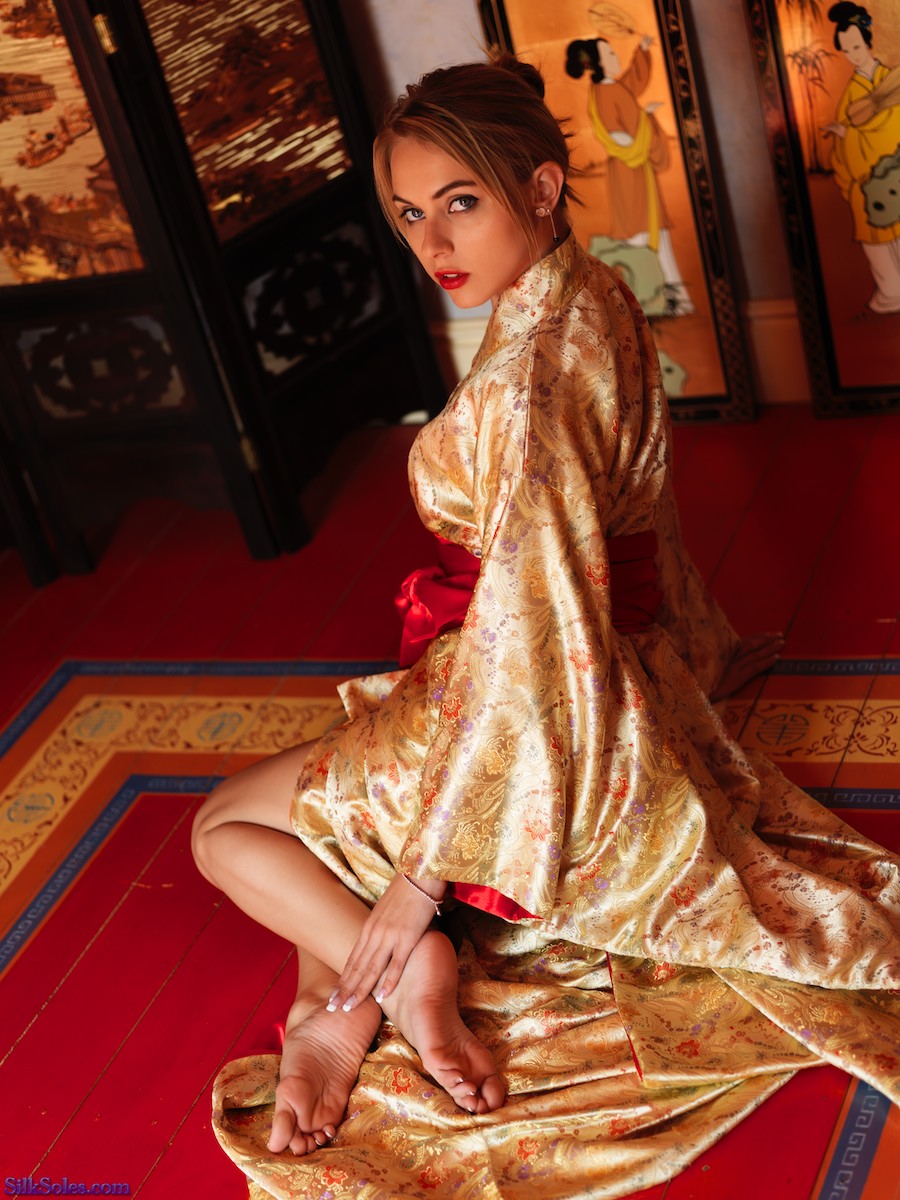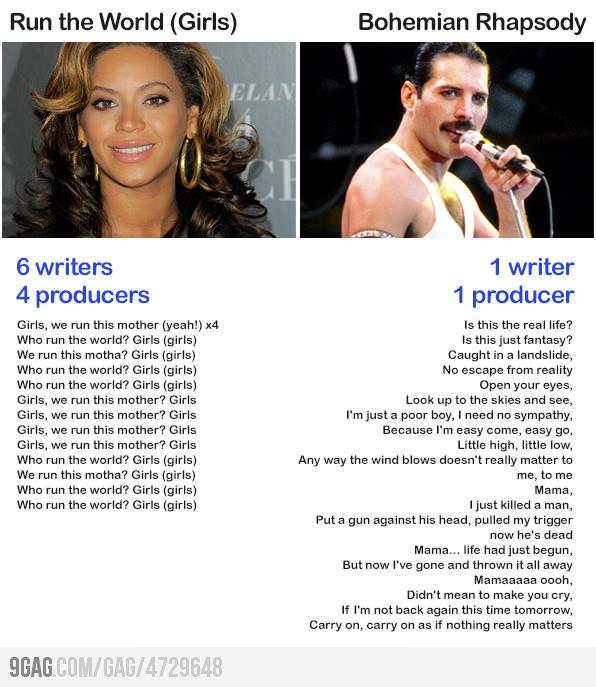Why I will not be taking this photo down
I posted this photo on Twitter, with accompanying text which read “New at http://SilkSoles.com this week: gorgeous @toychloe barefoot in the Oriental room!”
Someone replied that this was problematic, and identified two specific issues, assuming I have understood correctly. 1) Use of the word “Oriental” and 2) A white girl in a kimono as cultural appropriation. I was urged to do some research. So I have, and this is what I conclude thus far.
The Word “Oriental”
I apologise for the offence caused.
The Wikipedia entry for “Orient” mentions that the term “Oriental” is often considered an antiquated, pejorative, and disparaging term in North American English. I was not aware of this. I speak British English, being British; note that the Wikipedia entry makes no such mention for British English. The OED however notes that it is offensive when used of a person. I’m happy to update my use of language to avoid causing offence in future. I don’t much like being called “Taffy” or listening to the n-th joke about sheep shaggers, so it seems only reasonable.
In point of fact I was not using it of a person, but of an artistic style, orientalism, which pertains to a fashion in vogue at the time our Georgian house was built. I described the ROOM as “oriental”. There very likely was an “oriental” room in the house originally, and previous owners of the house have maintained something of that style of decor. I will henceforth call it something else, but will not be in a hurry to redecorate the room, because we like it, we might have to ask permission to do any such thing, and besides, it’s pretty.
A White Girl In A Kimono
Here I’m afraid I must disagree with my correspondent.
All people of all cultures have drawn inspiration and innovation from other cultures, throughout human history and indeed before. We are all human beings, and we should all be allowed to draw inspiration from cultures we were not born into.
White girls should be allowed to wear kimonos. Nigerian girls should be allowed to wear Ancient Greek Peplos. I have photographed Swedish, Romanian and Scottish girls wearing Cheongsams. I’ve photographed Italian people wearing historical Viking dress and English women wearing Togas. I’ve photographed Dutch men wearing dress traditionally considered appropriate for women; were they culturally appropriating the clothes of a traditionally oppressed minority? No, they were just doing something they enjoyed.
Should I have been offended at the cultural appropriation of English people wearing traditional Welsh dress at school Eisteddfods? Why should I? It’s not in any meaningful sense mine, even though I was born and raised in the country from whence the tradition originates.
I’m no moral authority, but I do have a silver rule to back up the golden rule. Replace all labels by the word “person” or “people” and see what I think of it then.
“Should a white girl be allowed to be photographed wearing a kimono?” becomes “Should a person be allowed to be photographed wearing a kimono?”. Yes they should. Anybody who wants to should be able to.
What is the alternative? Not shooting those photos with that model, I guess. Does that mean we should racially segregate the models who come to work with us? We’re planning to redecorate one room in our house (currently decorated with sailing ships and clouds) in the style of Norwegian folk art mixed with a bit of Jelling Style because I happen to like it and I want to try painting some things in that style myself.
Is it OK for me to do that because I have Scandinavian genes? (My father has an inherited condition which is associated with Viking genes, and one branch of the family name is of clear Nordic derivation). Or is the admixture of Celt such that I’m not allowed to use that for inspiration any more?
Once we have the Norwegian room, will it be OK to shoot the blue-eyed blonde British models there? What about shooting a model of Japanese ethnicity there, wearing traditional viking clothes with shoulder brooches? Polish models? Spanish models? Models whose family origins are from Iran? Russia? The Ukraine?
Saying that only models of a certain ethnicity or cultural origin are allowed to model in certain outfits or certain rooms in our house is unacceptable to me.
And let’s examine the Kimono in that photograph. It is a kimono in the following two senses (again, after Wikipedia). 1) It is a thing to wear, which is the literal meaning, and 2) It is similar in design to the traditional Japanese garment of that name.
It was designed and sewn by a British person based on a pattern designed by a European (inspired by that traditional Japenese style), from fabric made in India. That fabric is a synthetic one invented in Britain (or at least most likely descended from a material invented in Britain) but designed to look like a traditional Chinese fabric in texture and also with a design inspired by Chinese tradition.
There’s a long history of colonialism and bloody war between many of those civilisations.
The kimono itself, according to Wikipedia, was heavily influenced by traditional Han Chinese clothing. So should Japanese people even be allowed to wear them, since they are apparently culturally appropriated from China? What is the statute of limitations on how long ago a borrowing has to be before it becomes legitimate?
This is nonsense. Throughout history we’ve all begged, borrowed and stolen inspiration from each other, all the time and in all directions. We are all human beings. We should be allowed to. It is one of the most fertile sources of innovation we have.
So yes, I am good with 1977 London Punks appropriating Tartan, boys going to school in skirts, African Americans joining in the SCA and enjoying themselves pretending to be Medieval European nobility without the bad bits, Germans wearing Shalwar Kameez, Chinese people wearing dhotis, Jordians wearing saris, Japanese teenagers wearing jeans or suits, Swiss teenagers wearing muu’muu and British teenagers wearing fashions inspired by French and American designs from the 1950’s… and doing what the hell they like to them to give them their own personal twist.
Fusion cuisine is great. I’m happy for English people to make Bara Brith, Cawl or Welshcakes and put whatever twist they like onto it… and sell it in their recipe books. Again I have no more say or authority over who should get to adapt cawl recipes than any other human being on the planet, despite it being a historical staple of great importance to my oppressed culture. I have no more “right” to it than anyone else on the planet. It’s a thing, an invention of other human beings (who are all now dead, as it happens). It doesn’t have the rights and protections of person, and nor should it.
Consumption of food derived from agriculture should not be restricted to those from the either the fertile crescent or the area Iran where it was (likely) independently invented; once the idea spread, it belonged to all of us. One should be allowed to enjoy a Birmingham Balti or a sushi derived dish whatever one’s ethnicity. Welsh people should be allowed to eat pasta. It shouldn’t be restricted to Italians… or possibly Greeks.
More power to everyone’s creative elbow and have fun. And the same with fashion fusion, too. We will continue to put any model into any outfit in any room regardless of their ethnicity or cultural background, and tie them up in ways inspired by and derived from Western bondage traditions, Japanese bondage traditions, and any other thing we feel like trying.
(Incidentally, I am aware that research does not end with Wikipedia. But it is a good place to start.)

